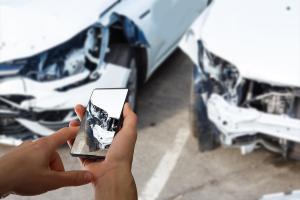Last updated: 18/07/2024 | Estimated Reading Time: 4 minutes
High value item insurance
If you're an avid art collector, a tech buff that needs to have the latest TV surround system or maybe just have few very special pieces of jewellery handed down to you, having the right home insurance policy is very important. It would be awful having your home broken into, your precious high value items being stolen and then finding out your insurance doesn't cover you.
A standard home insurance policy is unlikely to cover you for the above, very expensive items. It's best to purchase a separate high value item insurance policy to ensure your valuable items are appropriately covered.
In This Guide:
- What are high value items?
- What does high value item insurance cover?
- How to claim for a high value item
- Looking after high value items
What are high value items?
A high value item is usually anything that costs over £1000. When you purchase a home insurance policy it will likely have a single article limit (how much your insurer will payout for a single item). If you own something that is worth more than your single item limit, it's best to insure it as a high value item. If your insurer will only pay out £1500 for a single item and you have a piece of jewellery that is worth £3000, your standard policy won't be of any help.
Examples of high value items include:
- Bicycles
- Jewellery
- Art
- Collections such as stamps or coins
- Musical instruments
- Rare collectibles
- Sporting equipment such as skis
- Electronics such as TV or cameras
What does high value item insurance cover?
All policies are different and may cover you for varying situations, but overall your high value item policy will cover you the same as your contents insurance would.
You should be covered in the event of a fire, if you are a victim of theft and if your items are damaged during flooding or storms. For an extra cost, you can get additional cover for your high value items for accidental damage and/or if they are damaged or stolen outside your home.
How to claim for a high value item
Call your insurer
The most important thing to note is that it is best to make your claim as soon as you can, these things take time and the sooner you contact your insurance provider the sooner it can be resolved.
Your insurer will have a specific number for claims, make sure you have access to your insurance policy number and if you have been victim of theft you will need the crime reference number from the police.
Evidence
Taking photos of your high value items is very important. Firstly, photos will help police locate any stolen items and if you need anything restored, photos will help with this too. Secondly, photos of damage may be used as evidence by your insurer. It’s also very important you keep receipts and valuations of high value items to prove their worth. You must also fill out your claims form accurately, anything false will invalidate your claim.
Is it worth claiming at all?
Before you make your claim, you might want to consider whether it’s worth claiming at all. Making a claim will possibly make your premium (how much you pay for your insurance) more expensive next year. So, if you only want to make a small claim it may be worth paying for it out of your own pocket instead of breaking your no claims bonus.
Looking after high value items
- Secure your home – securing your house will, of course, help protect your important belongings from theft and damage. It will also ensure you are in the best position to make a claim in the event you have anything lost or stolen. If an insurer decides you have been careless with your personal possessions, they may reject your claim. If there are no signs of forced entry or a door has been left open, insurance claims are very hard to make. Install a burglar alarm, CCTV or security light to deter thieves. Also, don't hide spare keys outside your house for example under a doormat, it's an obvious place for a thief to look.
- Register belongings – items such as bicycles or electronic gadgets can be registered, so if you have anything stolen police are in a better position to track your items down.
- Keep records – it's a good idea to keep a contents insurance folder for insurance handbook (which will include all terms and conditions and any exclusions) and any related documents. You should also include in this file all original receipts and valuations of high value goods. This would also be a good place to keep a crime reference number safe if you ever have one.
- Work fast - add high value items to your policy as soon as they are purchased or given to you, it's better to be safe than sorry!




